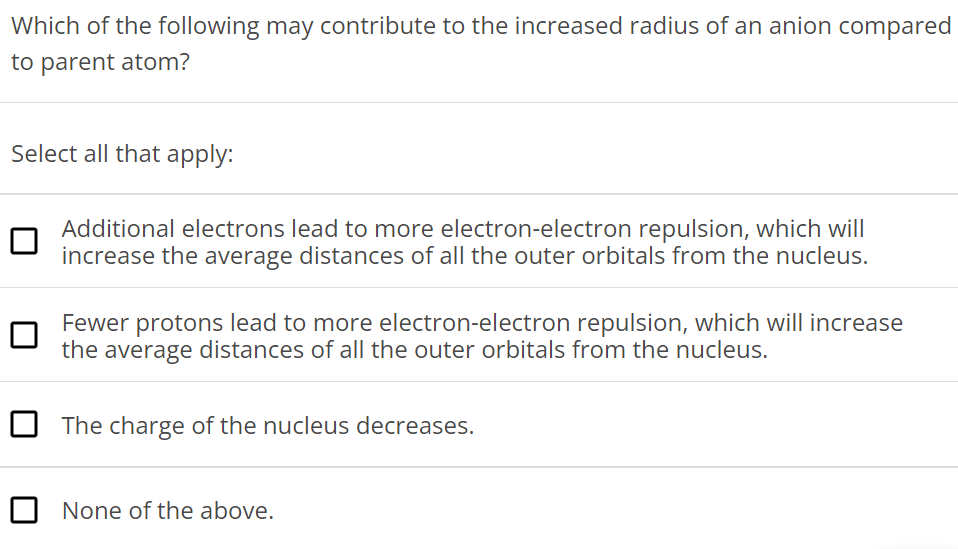Which of the following may contribute to the increased radius of an anion compared to parent atom? Select all that apply: Additional electrons lead to more electron-electron repulsion, which will increase the average distances of all the outer orbitals from the nucleus. Fewer protons lead to more electron-electron repulsion, which will increase the average distances of all the outer orbitals from the nucleus. The charge of the nucleus decreases. None of the above.
